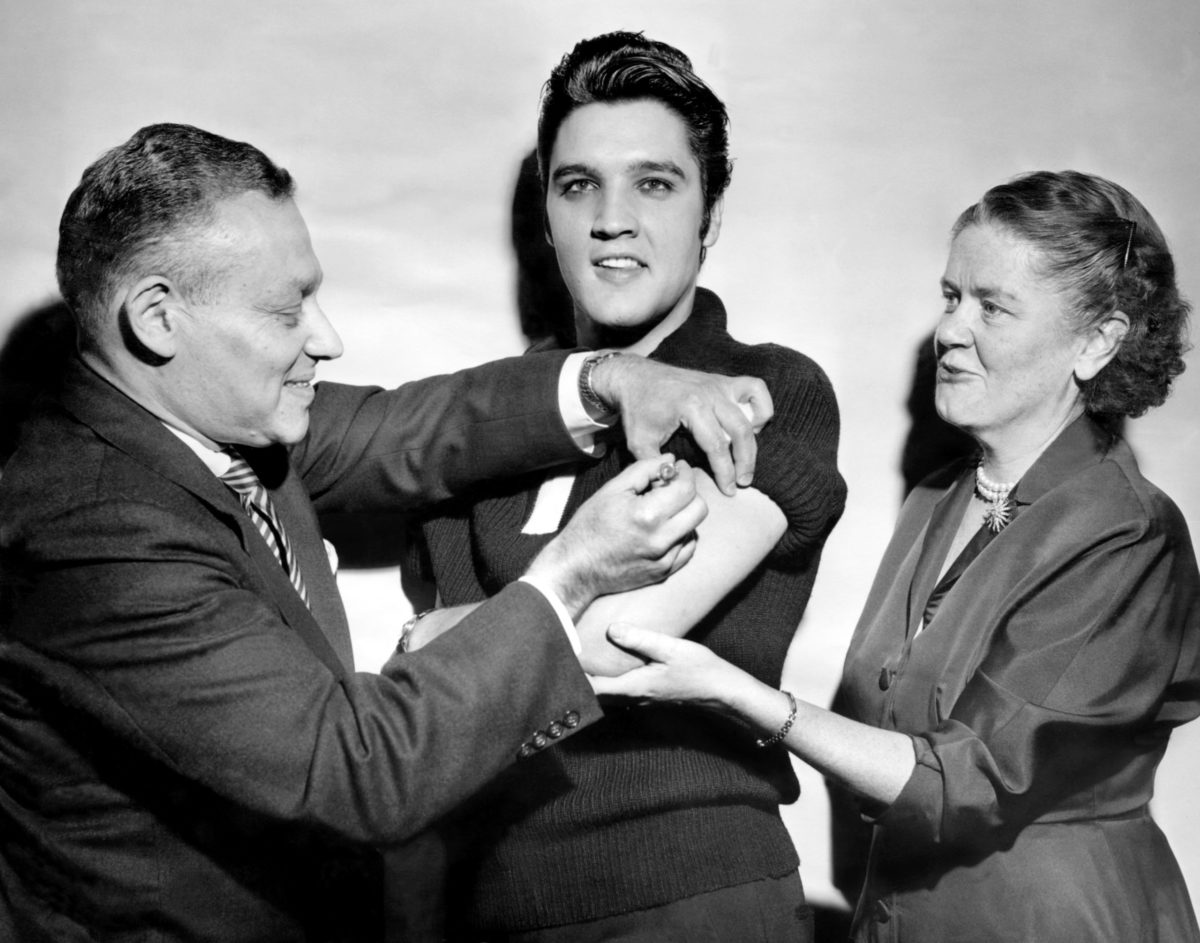On October 28, 1956, Elvis Presley appeared on “The Ed Sullivan Show”, hips a-swayin’, as he sang to a near-hysterical audience. But it turns out, Elvis Presley was more than just a “Hound Dog”, as historian David M. Perry demonstrates.
Elvis’s performance in itself was memorable, but his appearance also helped to save lives. A year prior, the Salk Vaccine Field Trials had proven to be 80 to 90 percent effective against the polio virus—a virus that struck seemingly without warning, leaving children, mostly young boys, with varying degrees of paralysis and in some circumstances, death.
In 1951 alone, there were 58,000 new recorded cases of polio, with more than 3,000 Americans dying from the disease.
Yet, despite Salk’s medical breakthrough, many Americans were still wary of the vaccine.
To help combat this, Presley readily agreed to receive the polio vaccine on live television. And indeed, after viewers watched the “King of Rock and Roll” happily become inoculated, there was a significant spike in immunizations across the country.
“It made headlines and, critically, also helped convince teens and young adults—people who thought they weren’t at risk—that they needed a vaccine too in order to help defeat the deadly disease,” Perry writes.
By 1957 new polio cases had dropped to under 6,000 in the U.S. And, according to the CDC, since 1979 no cases polio have originated from the U.S.
Salk is credited with saving the lives of millions by providing all Americans with relatively cheap and widespread access to his vaccine. But perhaps it was Presley’s “cool factor” that saved many originally wary or indifferent civilians.
Salk himself lost out on an estimated seven billion dollars in revenue by never patenting the vaccine. A fact that seemingly never bothered the scientist.
“Could you patent the sun?” he famously declared.





